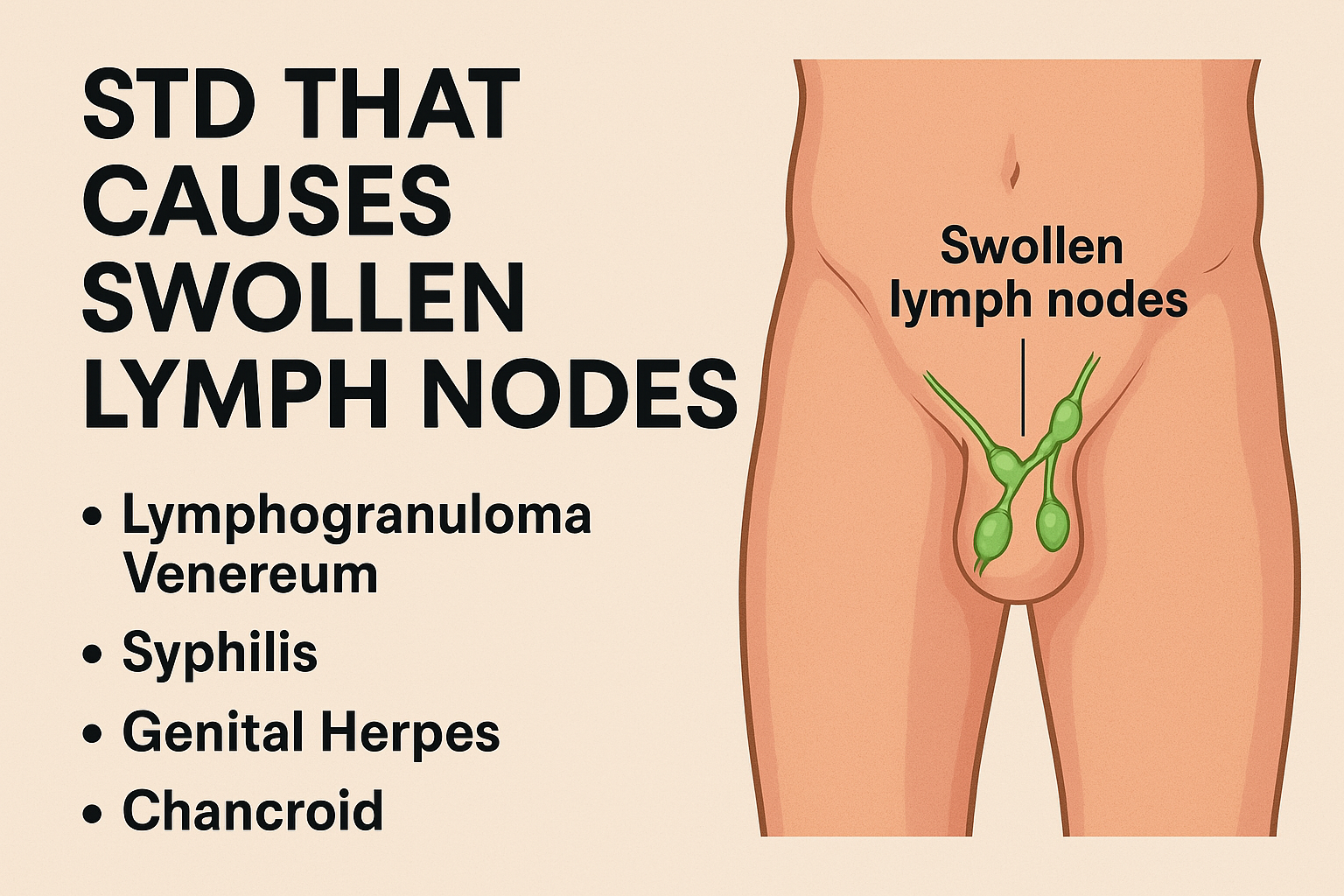If you’ve noticed a swollen bump in your neck, groin, or armpit, your first thought might be a cold or infection—but what if it’s something else?
In some cases, swollen lymph nodes can be a sign of a sexually transmitted disease (STD). Your lymph nodes are part of your immune system, and they swell up when your body is trying to fight off an infection—including some STDs.
In this article, we’ll break down which STDs can cause swollen lymph nodes, what symptoms to look for, and when it’s time to see a doctor.
What Are Lymph Nodes?
Lymph nodes are small, bean-shaped glands found throughout your body—in your neck, armpits, chest, abdomen, and groin. They filter harmful substances and help your body fight infections. When you’re sick, they can swell up, become tender, and sometimes feel painful.
When STDs enter the bloodstream or affect the lymphatic system, the nearest lymph nodes may swell as a response.
STDs That Can Cause Swollen Lymph Nodes
1. Genital Herpes (HSV-1 or HSV-2)
- Often causes swollen lymph nodes near the groin or neck during outbreaks
- May also include fever, body aches, and painful blisters
2. Syphilis
- In its early stage, it causes a painless sore (chancre) and swollen lymph nodes nearby
- Swelling usually happens in the groin or neck depending on where the sore appears
3. HIV (Acute and Chronic Stages)
- One of the most common early symptoms is generalized lymph node swelling
- Nodes may swell in the neck, groin, and underarms
- Often accompanied by fever, fatigue, rash, and sore throat
4. Lymphogranuloma Venereum (LGV)
- Caused by certain strains of chlamydia
- Leads to painful, swollen lymph nodes in the groin (called buboes)
- Often paired with rectal or genital symptoms, fever, and pain
5. Chancroid
- A rare bacterial STD that causes open sores and painful groin lymph node swelling
- May lead to abscesses if untreated
Other Possible Causes (Non-STD)
✔️ Common viral infections (cold, flu, mono)
✔️ Skin infections near the swollen area
✔️ Autoimmune diseases
✔️ Certain cancers or lymphatic disorders
If you’ve had recent unprotected sex, STD-related causes should be considered.
When to See a Doctor
You should see a healthcare provider if: ✔️ Swelling lasts more than a week or worsens
✔️ The node is painful, red, or very large
✔️ You have other symptoms like sores, fever, rash, or fatigue
✔️ You’ve had unprotected sex or a new sexual partner
Diagnosis and Testing
✔️ Physical exam to check location and feel of the swollen nodes
✔️ Blood tests for HIV, syphilis, or herpes
✔️ STD swabs if sores are present
✔️ Biopsy or imaging if needed for further investigation
Treatment Options
✔️ Herpes: Antiviral meds to reduce symptoms and outbreaks
✔️ Syphilis: A single injection of penicillin for early-stage cases
✔️ HIV: Antiretroviral therapy (ART) to manage symptoms and prevent spread
✔️ LGV and Chancroid: Antibiotics like doxycycline or azithromycin
Treating the STD usually causes the lymph nodes to return to normal size.
Prevention Tips
✔️ Always use condoms or dental dams
✔️ Avoid sex if you or your partner have visible sores or flu-like symptoms
✔️ Get tested regularly and encourage your partner to do the same
✔️ Don’t ignore symptoms—early treatment prevents complications
Final Thoughts
Swollen lymph nodes can feel scary—but in many cases, they’re your body’s way of sounding the alarm. If you’ve had unprotected sex or are showing other symptoms, consider getting tested.
💙 Your health matters. Listen to the signs, don’t guess—and take action early.
Related Reads
References
- CDC – Genital Herpes: cdc.gov/std/herpes
- CDC – Syphilis: cdc.gov/std/syphilis
- CDC – HIV: cdc.gov/hiv
- CDC – LGV: cdc.gov/std/lgv

Leave a Reply